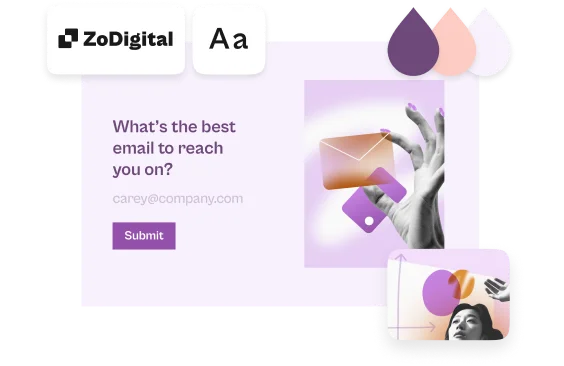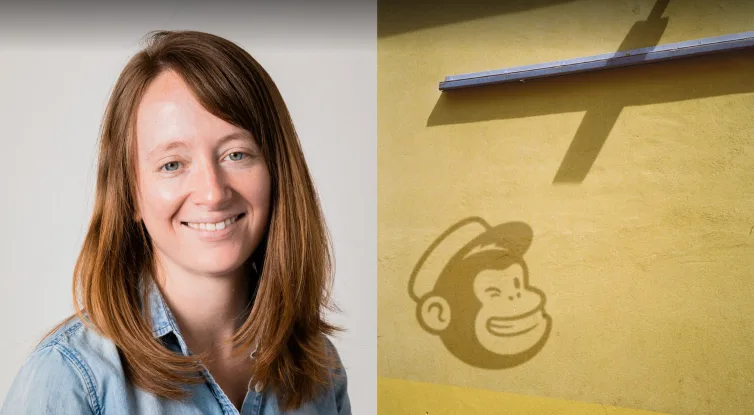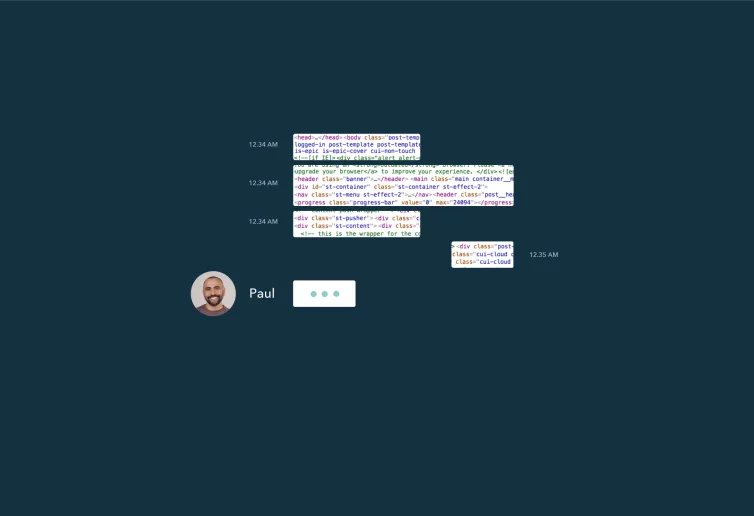In 1995, Newsweek published “The Internet? Bah!” where Clifford Stoll outlined the upcoming failure of the Internet.
“What the Internet hucksters won’t tell you is that the Internet is one big ocean of unedited data... You don’t know what to ignore and what’s worth reading.”
This was before Google, and it’s true—the Internet was a mess.
Lance Jones noticed the chaos as he clicked through his Netscape browser. And where Stoll saw doomed disorder, Jones saw an opportunity to provide something worth reading.
A year and a half later, Lance had a newly minted email newsletter with 120k readers. That’s when CNET swept in with an offer to buy.
But he didn’t stop there. After CNET, Lance sharpened his digital marketer’s toolkit at Lycos, Adobe, and Intuit—where he met Joanna Wiebe. Listen to Lance on the career change:
“One of those “I hate my boss” emails…”
Joanna and Lance went on to create Copy Hackers, one of the premier business resources for writing copy that converts. And more recently, Lance helped Joanna and cofounder Steven give birth to Airstory, writing software for deadline-driven content teams and bloggers.
I spoke with Lance about the challenges of growing businesses from scratch—from products and pricing to integrations and education. And his early business attempt that got the attention of Danny DeVito and Arnold Schwarzenegger. What?! Yeah, it’s in the interview below.
Leaping from big business to startups
EJ: What motivated you to move from big business back into the startup world?
LANCE: I really enjoyed the time I spent at Intuit and Adobe, but influencing large companies is hard, especially on the product side.
The appeal of working with a very small team is the influence you have over the product. You’re developing your mission as you go, you’re learning about your users as you go, and then you’re using that to shape where the product goes. Everything is completely malleable.
“Big companies are all about retention and not losing users to new competitors. Startups have nothing to lose, so there’s a passion in trying to grow.”
Find that product-market fit
EJ: What have been the major challenges as you’ve moved Airstory from idea to full-fledged product—and how have those challenges changed over time?
LANCE: Here’s one of the top challenges:
“The type of user that you’re trying to acquire and the software that you’re trying to build have to dovetail very nicely.”
If you change the product, you end up influencing the types of users you’re going to acquire. And if you start with the types of customers you want to acquire, you end up changing the product.
So there’s kind of a push-pull, but that tight integration between these two things is always there.
And there have been some real changes as we’ve gone along.
Airstory, for example, started out as an outlining tool for traditional writers that has evolved into a writing platform for marketers, designers, content marketers, and bloggers. This puts us in a competitive space that includes Microsoft Word and Google Docs.
So the big challenge is how to match the functionality of those very mature products. For instance, we had to build our own collaborative editing feature to be on par with Google Docs.
And then we have to provide a better experience for our target audience than Google Docs does. And that’s really been the core challenge for us. There’s a lot that comes from a decision to compete in a space occupied by large companies with large budgets and large numbers of users.
EJ: How do you prioritize your own ideas and feature requests from customers, while really narrowing down the market that you’re after?
LANCE: We talk about this almost daily. The initial idea for launching Airstory looked like this:
Get something out there for people to see.
Use the Copy Hackers brand and user base to learn about people’s needs and challenges.
Release a beta version, get feedback, and find out what resonates with users.
But then we started having a lot more conversations about who we actually wanted to be, what our mission really is, and what value proposition we had to offer for the product. And we asked ourselves how well this lines up with the challenges people have when writing lots of content and striving to create great content.
By doing this, our mission started taking shape:
“Make it easier and faster for people to write content and create marketing materials, ebooks, landing pages, and company emails.”
Once we started to gel on the mission of speed, it helped us prioritize a long product roadmap with like 30-40 things on it. So now the top of that list is all about speed and efficiency—making it easier for people to get a final product out the door.
“Going narrow means going big”
“Find people with a challenge and passion for what they do… the rest will take care of itself.”
EJ: You’ve said elsewhere that “going narrow actually means going big.” How do you avoid temptation to appeal to the largest market possible and stay focused on that narrow niche?
LANCE: Too many big companies are trying to appeal to the largest possible market, and so a lot of their messaging is lowest common denominator across all possible segments.
But the problem with aiming for the lowest common denominator, at least in the copywriting world, is that it doesn’t get people too excited. It’s watered down and people can’t see themselves in those messages.
So our approach is to find a core group of people who have a passion for what they do, and make it really clear that Airstory is for them. They’re going to see themselves in the messaging on the homepage, the onboarding process, the available features. We’re going to try to read their minds and anticipate what they need once they get into the product.
“This is how you develop real passion in a brand.”
Keep it narrow, find people with a challenge and passion for what they do, and build something exactly for them.
How to set a pricing strategy
“Pricing strategy is three-pronged: art, science, and guessing.”
EJ: Airstory is a SaaS product with a recurring revenue model. How did you come up with your pricing strategy?
LANCE: You’ve touched on another challenge, which is probably more art than science. Actually it’s probably 3-pronged: art, science, and guessing. And maybe heaviest on the guessing, at least initially for the product.
One of the obvious things to consider is: what does your competitive space look like?
When you enter a new market, or if you’re in a space with very few direct competitors, there’s a lot of latitude with pricing because you’re less constrained by what your competitors are doing. But when you have competitors, you look to see what they’re doing.
In Airstory’s case, a lot of those competitors are free, like Google Docs. So we have a two-fold problem: we have to convince people to move to a paid solution, and then we have to choose the price.
To do this, we began with how much value Airstory provides and asked questions like:
What free and paid tools do our target people currently use to get their job done?
What kinds of products do they pay for in general?
How much are people paying to host their blog and produce their content?
Where does Airstory fit in?
It’s about discovering how much value we can create so people perceive us as indispensable.
So right now we’re kind of freemium, because users get a single project for free. But soon we’re going to be moving to only paid products with a free trial. And of course we’ll grandfather in our existing users with any price changes.
But we’re still learning what’s right for this market and our target users, and making sure that our perceived value lines up with the new pricing strategy.
Integrations and workflows in SaaS
EJ: Airstory is a tool that helps people in a certain stage of a larger process—moving content from idea to production to distribution. How important are integrations for getting information into and out of Airstory?
LANCE: I’ve really had my eyes opened to this in the past few years:
“Integrations and workflows are critical to success if you’re building a software product. Especially if you’re B2B.”
It’s related to the whole idea of going narrow and building something really amazing for a segment or niche.
There are so many great SaaS products out there, and this can be a problem for the end user who has to string all these products together.
You don’t want people saying “I’m not going to use this product even though it’s amazing for what I do, because I want to keep my life simpler with this all-in-one product.” That’s a really bad compromise for users to have to make.
And this is where integrations come in to help solve that problem. You look at what people are using, and you have to figure out how you fit in to their existing workflow.
So for Airstory, we look at the bevy of tools that people are using to create content and marketing materials, and we figure out how we fit in.
We allow people to move content into Airstory from wherever they create it, like cards from Evernote or photos from Instagram. Then once they’ve massaged that content into something close to final, we let people move it out into WordPress, Google Docs, and several other platforms in a single click.
Changing somebody’s workflow is incredibly difficult. So we’re going to make it easy for people to see where we fit into their existing workflow, and make the process of integrating with us as easy as possible.
Educate through content
EJ: You also put a lot of emphasis on education, for example, with your Tuesday Tutorials. How important is the content and teaching side to the business?
LANCE: I’ve yet to see a better way to build loyalty or engender trust in a target market than by teaching them.
For example, Joanna is very skilled in copywriting, so she teaches:
How to write better emails that get more opens and more clicks
How to write landing page copy
How to do review mining of Amazon to help you create your messaging
Copywriting tricks and other things to keep in mind
The Tuesday Tutorials are a good example. Joanna uses Airstory when she teaches, so people who see the tutorials are constantly asking “What’s Airstory? How can I get using Airstory?” And the follow-up conversations are helping to build the business.
Here’s something else that’s been really helpful. We focus on the Airstory teaching templates to help people write better emails and landing pages. We do this by inserting comments along the way in our own product to show people why we’re choosing this subject line, or why we’re choosing this hook as an opener. People see these and say, “I get what I’m supposed to do, and I also get why I’m supposed to do it.”
“People will stay with you once you’ve taught them how to be better.”
Danny DeVito and Arnold Schwarzenegger want my idea
EJ: I can’t let you go without clearing a curiosity. I heard that in your twenties you made a board game that interested Danny DeVito and Arnold Schwarzenegger. What was that about?
LANCE: Wow! Yeah, that is an interesting story. So, back in college I worked with this guy named Ray at a furniture store, and one day I asked him, “If you had $25,000 dropped on your lap, what would you do?” And he said, “I would get my game created and out there.”
So we went back to his place for a beer, and he pulled out this crappy board game he’d made called “Sweat It Out.” Ray was a bodybuilder and into the whole fitness craze at the time.
But he didn’t know what to do with this. So I lent him some money to build a proper prototype, and we showed it to some investors. Then Ray took it down to Huntington Beach, California, to show this bodybuilder friend of his.
During the trip they ended up at an after-shoot party for the movie Twins, starring Danny DeVito and Arnold Schwarzenegger. So he showed them the game, and they were really interested. Eventually Ray took on some investment and things were looking good.
But there was a hard lesson learned. He just wasn’t smart about how he spent that initial capital. And things just completely fizzled after that.
So it did not have a happy ending, other than maybe “lesson learned” about what you should and shouldn’t do once you’re getting that early success. But it was quite a fun ride.






